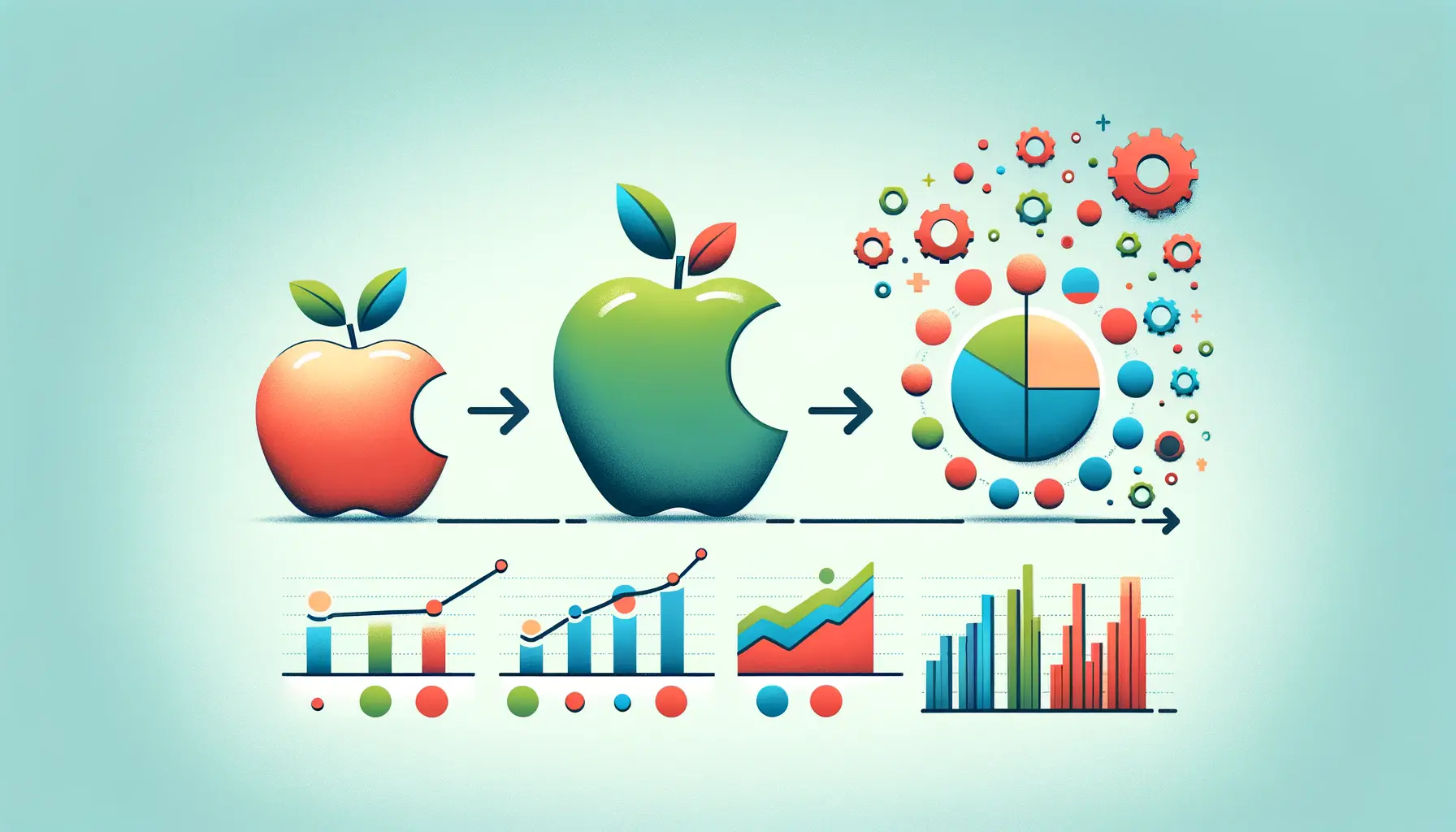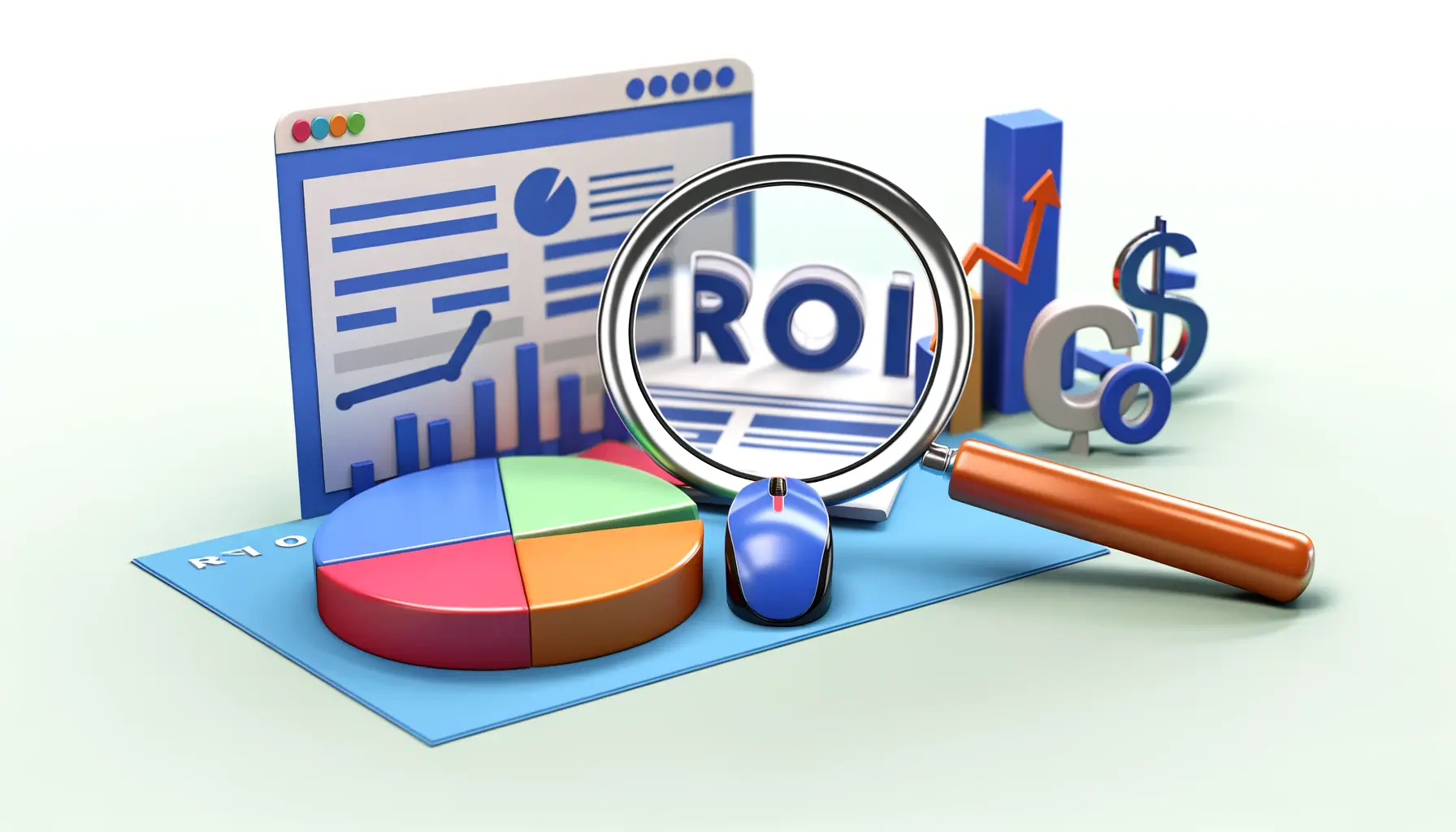The digital advertising landscape is undergoing a significant transformation, driven by advancements in technology, changes in consumer behavior, and evolving regulatory standards.
As we delve into the future of digital ad measurement, it’s crucial to understand how these changes will shape the strategies and tools businesses use to track and optimize their advertising efforts.
Digital ad measurement, the cornerstone of effective online advertising, is set to evolve in ways that will redefine how marketers gauge success, allocate budgets, and understand their audiences.
At the heart of this evolution is the shift towards privacy-first advertising, spurred by increasing consumer demand for data protection and new regulations.
This shift challenges the traditional reliance on cookies and third-party data, pushing the industry towards more innovative and ethical approaches to ad measurement.
As we explore the future trends in digital ad measurement, it’s essential to recognize the role of Apple Search Ads Measurement in this new era.
This platform exemplifies the move towards more transparent, accurate, and user-friendly measurement solutions, setting a benchmark for the industry.
- Shift in Digital Ad Measurement
- Emerging Technologies in Ad Measurement
- Integrating Apple Search Ads into Measurement Strategies
- Challenges and Solutions in Digital Ad Measurement
- Maximizing ROI with Advanced Attribution Models
- Future Trends in Digital Ad Measurement
- Strategies for Implementing Effective Measurement Practices
- Conclusion: Navigating the Future of Digital Ad Measurement
- Frequently Asked Questions About Digital Ad Measurement
Shift in Digital Ad Measurement
The digital advertising world is at a pivotal point, with the impending deprecation of third-party cookies signaling a significant shift in ad measurement practices.
This change is not merely a technical adjustment but a fundamental transformation in how advertisers collect, analyze, and utilize data to make informed decisions.
The transition away from cookies and towards first-party data and privacy-centric measurement models is reshaping the landscape, compelling marketers to adopt new strategies that align with these evolving norms.
Apple’s introduction of privacy measures like the App Tracking Transparency (ATT) framework has further accelerated this shift.
Advertisers are now tasked with navigating these changes while ensuring their ad measurement strategies remain robust and effective.
The challenge lies in balancing privacy concerns with the need for detailed insights into ad performance and user behavior.
This balance is critical for the development of measurement approaches that are not only compliant with new privacy standards but also capable of delivering the actionable insights needed to drive advertising success.
Adapting to Privacy-First Measurement
As the industry moves towards a privacy-first approach, advertisers and platforms are exploring alternative methods for tracking and measurement that do not compromise user privacy.
Techniques such as aggregated event measurement, conversion modeling, and the use of privacy-preserving APIs are gaining traction.
These methods offer a way to understand ad performance and user engagement without relying on invasive tracking practices.
The emphasis on privacy-first measurement requires advertisers to rethink their reliance on detailed user-level data.
Instead, the focus is shifting towards aggregated data and statistical models that can provide insights without infringing on user privacy.
This transition challenges advertisers to maintain the effectiveness of their campaigns while adhering to stricter privacy standards.
It’s a delicate balance, but one that is essential for the future sustainability of digital advertising.
Embracing new measurement technologies and methodologies is crucial for advertisers aiming to thrive in a privacy-first digital landscape.
Emerging Technologies in Ad Measurement
The evolution of digital ad measurement is closely tied to the development of new technologies and methodologies.
These innovations are designed to address the challenges posed by the changing digital landscape, offering advertisers new ways to measure and optimize their campaigns effectively.
Let’s explore some of the key technologies that are shaping the future of digital ad measurement.
Machine Learning and AI in Measurement
Machine learning and artificial intelligence (AI) are at the forefront of transforming ad measurement.
These technologies enable the analysis of vast datasets to identify patterns, predict outcomes, and provide insights that were previously unattainable.
AI-driven models can optimize ad targeting, predict customer behavior, and measure the impact of advertising campaigns with a high degree of accuracy.
By leveraging machine learning algorithms, advertisers can automate the optimization process, ensuring that their campaigns are continually refined to achieve the best possible results.
Furthermore, AI and machine learning facilitate more sophisticated attribution models.
These models can accurately attribute conversions across multiple touchpoints, providing a clearer picture of the customer journey.
This insight allows advertisers to allocate their budgets more effectively, focusing on the channels and tactics that deliver the highest return on investment (ROI).
Blockchain for Transparency and Fraud Prevention
Blockchain technology is emerging as a powerful tool for enhancing transparency and preventing fraud in digital advertising.
By creating a decentralized and immutable ledger of ad transactions, blockchain can provide verifiable proof of ad delivery, ensuring that advertisers are only charged for genuine impressions and interactions.
This technology can significantly reduce the prevalence of ad fraud, which has long been a challenge for the industry.
In addition to fraud prevention, blockchain enables greater transparency throughout the advertising supply chain.
Advertisers can see exactly where their ads are being placed, who is viewing them, and how their budget is being allocated.
This level of transparency is invaluable for building trust between advertisers, publishers, and platforms.
- Machine learning and AI optimize ad targeting and measure campaign impact.
- Advanced attribution models provide insights into the customer journey.
- Blockchain enhances transparency and combats ad fraud.
Incorporating emerging technologies like AI, machine learning, and blockchain can significantly enhance the accuracy, efficiency, and integrity of digital ad measurement.
Integrating Apple Search Ads into Measurement Strategies
Apple Search Ads has become a pivotal component of digital ad measurement strategies, especially in the context of the privacy-first advertising landscape.
This platform offers a unique opportunity for advertisers to reach potential customers on the App Store, leveraging Apple’s vast user base and data capabilities while respecting user privacy.
Integrating Apple Search Ads into your measurement strategy not only aligns with current privacy standards but also opens up new avenues for reaching and engaging your target audience.
Benefits of Apple Search Ads for Measurement
One of the key advantages of Apple Search Ads is its ability to provide high-quality, relevant ad placements directly within the App Store search results.
This ensures that ads are shown to users who are actively searching for apps, increasing the likelihood of engagement and conversion.
Moreover, Apple Search Ads operates on a privacy-friendly model, utilizing anonymized, aggregated user data to target ads effectively without compromising individual privacy.
Another significant benefit is the detailed performance metrics provided by Apple Search Ads.
Advertisers have access to a wealth of data, including impressions, clicks, conversion rates, and more.
This data is crucial for understanding the effectiveness of your campaigns and making informed decisions about optimization and budget allocation.
Additionally, the platform’s integration with attribution partners allows for seamless tracking of conversions and user engagement, further enhancing the measurement capabilities.
Optimizing Campaigns with Apple Search Ads
To fully leverage Apple Search Ads in your measurement strategy, it’s important to focus on keyword optimization and audience targeting.
By carefully selecting keywords that are relevant to your app and target audience, you can improve the visibility and effectiveness of your ads.
Utilizing Apple’s targeting options, such as customer type (new customers, returning, etc.) and demographic information, allows for more precise targeting, ensuring that your ads reach the most relevant users.
Regularly reviewing and analyzing the performance data from Apple Search Ads is also essential.
This analysis can identify trends, uncover insights into user behavior, and highlight areas for improvement.
By continuously refining your campaigns based on this data, you can enhance their performance over time, achieving better results and a higher ROI.
- Utilize keyword optimization and audience targeting to improve ad effectiveness.
- Analyze performance data to uncover insights and refine campaigns.
- Leverage Apple’s privacy-friendly ad targeting to reach relevant users without compromising privacy.
Incorporating Apple Search Ads into your digital ad measurement strategy offers a unique blend of precision targeting and privacy compliance, essential for success in today’s advertising ecosystem.
Challenges and Solutions in Digital Ad Measurement
While the future of digital ad measurement is bright with innovation and potential, it also presents a set of challenges that advertisers and marketers must navigate.
These challenges stem from the evolving digital landscape, privacy regulations, and the inherent complexities of measuring ad effectiveness across diverse platforms and channels.
However, with every challenge comes a solution, and understanding these can help advertisers adapt and thrive in the changing environment.
Privacy Regulations and Data Limitations
The tightening of privacy regulations globally, such as GDPR in Europe and CCPA in California, poses significant challenges for digital ad measurement.
These regulations restrict the use of personal data for advertising purposes, limiting the ability of advertisers to track user behavior across sites and apps.
The solution lies in adopting privacy-first measurement techniques, such as using first-party data, anonymized data sets, and privacy-preserving measurement technologies.
Advertisers must also ensure transparency with users about data usage and provide options for consent management.
Furthermore, the shift away from third-party cookies and identifiers requires advertisers to explore alternative methods for tracking and attribution.
Solutions such as unified IDs, which offer a privacy-compliant way to track users across platforms, and the development of contextual advertising strategies, which rely on the context of the content rather than user data, are gaining traction.
Fragmentation Across Platforms and Channels
The digital advertising ecosystem is characterized by a multitude of platforms and channels, each with its own measurement metrics and systems.
This fragmentation makes it challenging to achieve a unified view of campaign performance and to measure the ROI across different mediums.
The solution involves the integration of cross-platform measurement tools and platforms that can aggregate data from various sources into a cohesive dashboard.
By leveraging advanced analytics and attribution models, advertisers can gain a more accurate and comprehensive understanding of their campaigns’ effectiveness across the digital landscape.
Additionally, the adoption of standardized measurement metrics and the collaboration between platforms and industry bodies can help reduce fragmentation and improve the comparability of data across different channels.
- Adopt privacy-first measurement techniques and ensure transparency with users.
- Explore alternative tracking methods, such as unified IDs and contextual advertising.
- Utilize cross-platform measurement tools to achieve a unified view of campaign performance.
Navigating the challenges of digital ad measurement requires a blend of innovative solutions, adoption of new technologies, and adherence to privacy standards, ensuring effective and ethical advertising practices.
Maximizing ROI with Advanced Attribution Models
In the quest for maximizing the return on investment (ROI) in digital advertising, advanced attribution models play a crucial role.
These models offer a more nuanced understanding of how different touchpoints contribute to conversions, enabling advertisers to allocate their budgets more effectively.
As the digital ad landscape becomes increasingly complex, the importance of leveraging sophisticated attribution techniques cannot be overstated.
The Evolution of Attribution Models
Attribution modeling has evolved significantly from the simplistic first-click and last-click models to more advanced multi-touch attribution (MTA) and data-driven models.
First-click and last-click attributions, while easy to implement, often provide a skewed perspective of campaign effectiveness by crediting the entire conversion to either the first or the last touchpoint.
In contrast, multi-touch attribution models distribute credit across several touchpoints, offering a more balanced view of what drives conversions.
Data-driven attribution, the most advanced form of attribution modeling, uses machine learning algorithms to analyze all touchpoints across the customer journey.
This model assigns credit based on the actual impact of each interaction, providing a highly accurate understanding of how different marketing efforts contribute to conversions.
By leveraging data-driven attribution, advertisers can make informed decisions about where to invest their advertising dollars for the maximum impact.
Implementing Advanced Attribution Models
Implementing advanced attribution models requires access to comprehensive data and the ability to analyze it effectively.
Advertisers should start by ensuring that they have robust tracking mechanisms in place to capture data across all touchpoints.
Integrating data from various sources into a centralized analytics platform is also crucial for effective analysis.
Once the data infrastructure is in place, advertisers can begin experimenting with different attribution models to determine which provides the most accurate insights for their specific campaigns.
Continuous testing and refinement are key, as the effectiveness of attribution models can vary depending on the marketing channels used, the length of the sales cycle, and other factors.
- Transition from simplistic to more sophisticated, data-driven attribution models.
- Ensure robust tracking across all touchpoints and integrate data for analysis.
- Experiment with different models to find the most accurate for your campaigns.
Advanced attribution models are essential for understanding the true impact of each marketing touchpoint, enabling advertisers to optimize their campaigns for the highest ROI.
Future Trends in Digital Ad Measurement
The landscape of digital ad measurement is continuously evolving, shaped by technological advancements, changing consumer behaviors, and regulatory developments.
As we look towards the future, several key trends are emerging that will redefine how advertisers measure and optimize their digital advertising efforts.
Understanding these trends is crucial for staying ahead in the competitive digital marketing space.
Increased Emphasis on First-Party Data
With the decline of third-party cookies and increasing privacy regulations, first-party data is becoming the gold standard for digital advertising.
Advertisers are now focusing on collecting and leveraging data directly from their customers through interactions on their websites, apps, and other digital properties.
This shift towards first-party data not only complies with privacy laws but also provides advertisers with more accurate and relevant information for personalizing ads and measuring their effectiveness.
Investing in customer relationship management (CRM) systems and data management platforms (DMPs) will be key for advertisers to effectively collect, store, and analyze first-party data.
This approach allows for more targeted and effective advertising campaigns, driven by insights derived directly from the advertiser’s audience.
Advancements in Cross-Device and Cross-Channel Measurement
As consumers increasingly use multiple devices and engage with brands across various channels, the ability to track and measure interactions across these touchpoints is becoming more important.
Advancements in cross-device and cross-channel measurement technologies are enabling advertisers to gain a holistic view of the customer journey.
These technologies use sophisticated algorithms to link interactions across devices and channels, providing a unified picture of how consumers interact with brands.
This comprehensive view allows advertisers to optimize their campaigns more effectively, ensuring that they deliver consistent and personalized experiences across all touchpoints.
It also enables more accurate attribution of conversions, helping advertisers to understand the true value of each channel and device in their marketing mix.
Privacy-Centric Measurement Solutions
The future of digital ad measurement will also see a greater focus on privacy-centric solutions.
As consumers become more concerned about their data privacy, and as regulations continue to evolve, advertisers will need to adopt measurement approaches that respect user privacy while still providing valuable insights.
Technologies such as differential privacy, which adds noise to datasets to protect individual privacy, and federated learning, which allows for model training on decentralized devices, are examples of how measurement can be conducted in a privacy-preserving manner.
These privacy-centric approaches ensure that advertisers can continue to measure and optimize their campaigns effectively without compromising consumer privacy.
Embracing these solutions will be crucial for building trust with consumers and ensuring compliance with privacy regulations.
- Shift towards leveraging first-party data for more personalized and effective advertising.
- Utilize advancements in cross-device and cross-channel measurement for a unified view of the customer journey.
- Adopt privacy-centric measurement solutions to respect consumer privacy while gaining valuable insights.
Staying informed about future trends in digital ad measurement is essential for advertisers looking to navigate the evolving digital landscape effectively and maintain a competitive edge.
Strategies for Implementing Effective Measurement Practices
As the digital advertising landscape continues to evolve, implementing effective measurement practices is crucial for advertisers seeking to optimize their campaigns and maximize ROI.
The right strategies can help advertisers navigate the complexities of digital ad measurement, ensuring they remain agile and informed in a rapidly changing environment.
Here, we outline key strategies for building a robust digital ad measurement framework.
Embrace a Holistic Measurement Approach
Adopting a holistic measurement approach means looking beyond single metrics or channels to understand the broader impact of your advertising efforts.
This approach involves integrating data from all available sources, including online and offline channels, to gain a comprehensive view of how each touchpoint contributes to your overall marketing objectives.
By doing so, advertisers can make more informed decisions, allocate budgets more effectively, and identify opportunities for optimization across the entire customer journey.
Implementing a holistic measurement strategy also involves embracing advanced attribution models, as discussed earlier.
These models can provide deeper insights into the effectiveness of different marketing channels and tactics, enabling advertisers to refine their strategies for better results.
Leverage Technology and Tools for Enhanced Measurement
The use of technology and tools is indispensable for effective digital ad measurement.
Advertisers should invest in analytics platforms, data management solutions, and other measurement tools that can process large volumes of data and provide actionable insights.
These tools can help automate data collection and analysis, reduce manual errors, and save time, allowing advertisers to focus on strategy and optimization.
Moreover, staying updated with the latest measurement technologies and trends is essential.
As the digital landscape evolves, new tools and methodologies emerge that can offer more precise measurements, better privacy compliance, and deeper insights into campaign performance.
Focus on Privacy Compliance and Ethical Data Use
In today’s privacy-conscious world, ensuring compliance with data protection regulations and ethical data use is not just a legal requirement but also a competitive advantage.
Advertisers must prioritize privacy in their measurement practices, adopting techniques that respect user consent and data protection laws.
This includes transparent data collection practices, secure data storage, and the use of anonymization techniques where appropriate.
Building trust with your audience through ethical data practices can enhance brand reputation and customer loyalty, contributing to long-term success in the digital marketplace.
- Integrate data from all sources for a comprehensive view of marketing effectiveness.
- Invest in advanced tools and technologies for accurate and efficient measurement.
- Ensure privacy compliance and ethical data use to build trust with your audience.
Adopting effective digital ad measurement practices is essential for navigating the complexities of the digital advertising landscape, optimizing campaign performance, and achieving a competitive edge.
Conclusion: Navigating the Future of Digital Ad Measurement
The future of digital ad measurement is both challenging and exciting, marked by rapid technological advancements, shifting consumer expectations, and evolving regulatory landscapes.
As we have explored, the key to success in this dynamic environment lies in embracing innovation, prioritizing privacy, and adopting a holistic approach to measurement.
The role of digital ad measurement in driving effective advertising strategies cannot be overstated, offering invaluable insights that help advertisers optimize their campaigns, enhance user engagement, and maximize return on investment.
Embracing Change and Innovation
Adapting to the future of digital ad measurement requires a willingness to embrace change and innovation.
As traditional methods become obsolete, the adoption of new technologies and approaches, such as machine learning, AI, and blockchain, will be crucial.
These advancements promise to improve accuracy, efficiency, and transparency in ad measurement, enabling advertisers to stay ahead of the curve.
Prioritizing Privacy and Trust
In an era where privacy concerns are paramount, building trust with consumers through ethical data practices is essential.
Advertisers must navigate the fine line between effective measurement and respect for user privacy, ensuring compliance with global data protection regulations.
The future of digital ad measurement will increasingly rely on privacy-centric solutions that safeguard user data while still delivering actionable insights.
Adopting a Holistic Measurement Strategy
A holistic measurement strategy, integrating data from multiple sources and utilizing advanced attribution models, is key to understanding the complex customer journey.
By gaining a comprehensive view of how each touchpoint contributes to overall marketing goals, advertisers can allocate their budgets more effectively and achieve a higher ROI.
This approach underscores the importance of digital ad measurement in crafting successful, data-driven advertising strategies.
- Stay informed about technological advancements and regulatory changes.
- Invest in tools and platforms that offer advanced measurement capabilities.
- Ensure measurement practices are privacy-compliant and user-centric.
In conclusion, the future of digital ad measurement is poised for significant transformation.
Advertisers who are proactive in adopting new technologies, prioritizing privacy, and implementing holistic measurement strategies will be best positioned to navigate the complexities of the digital advertising landscape.
By doing so, they can unlock new opportunities for growth, engagement, and success in an increasingly competitive market.
If you're seeking expertise in Apple Search Ads campaigns, visit our service page for professional management!
Frequently Asked Questions About Digital Ad Measurement
Explore common inquiries surrounding the evolving landscape of digital ad measurement.
Digital ad measurement evaluates the effectiveness of online advertising campaigns, tracking metrics like impressions, clicks, and conversions.
Accurate measurement ensures advertisers can optimize campaigns, allocate budgets effectively, and achieve a higher return on investment.
Privacy regulations limit data collection, pushing the industry towards privacy-first measurement techniques that respect user consent.
Challenges include navigating privacy regulations, data fragmentation across platforms, and the deprecation of third-party cookies.
Advertisers are leveraging first-party data, adopting new technologies, and utilizing advanced attribution models for measurement.
AI and machine learning analyze vast datasets, optimizing ad targeting and providing deeper insights into campaign performance.
By adopting privacy-centric measurement solutions, ensuring transparency, and respecting user data protection laws.
The future focuses on privacy-friendly approaches, leveraging first-party data, and integrating cross-device measurement technologies.














